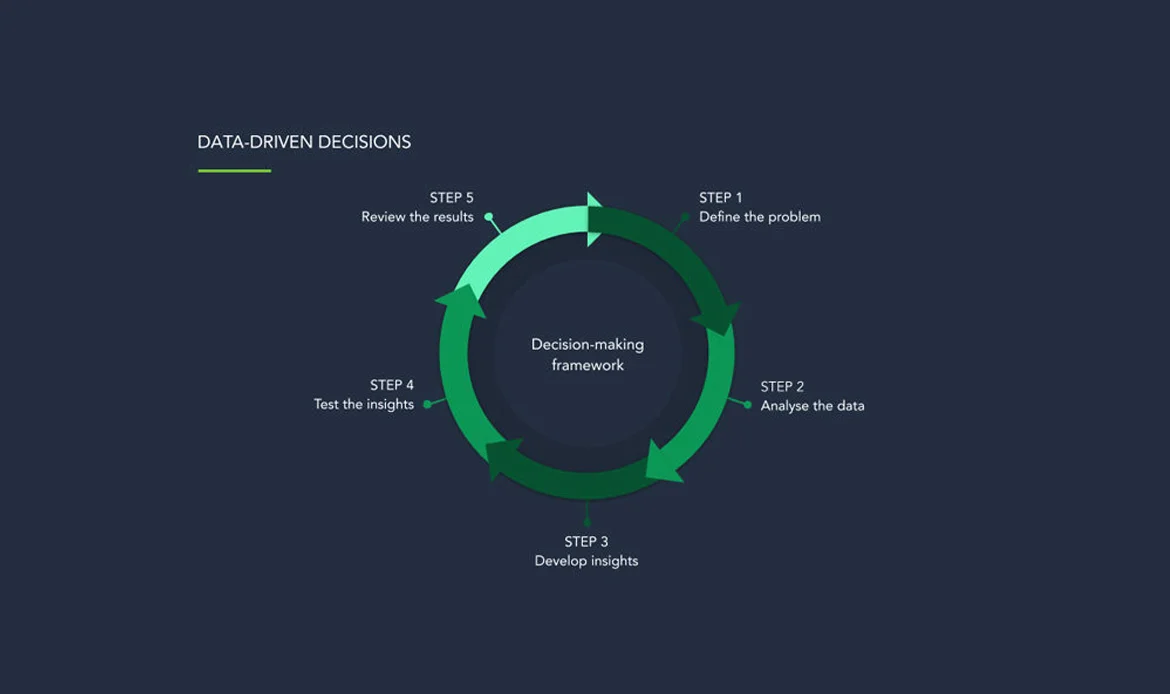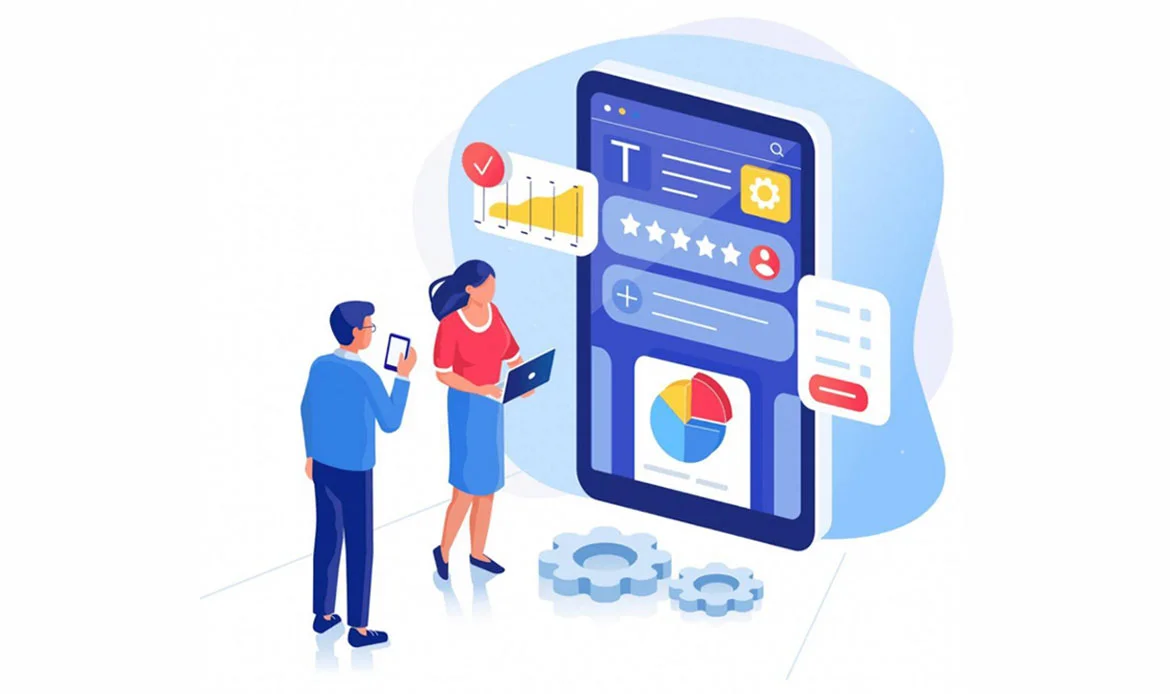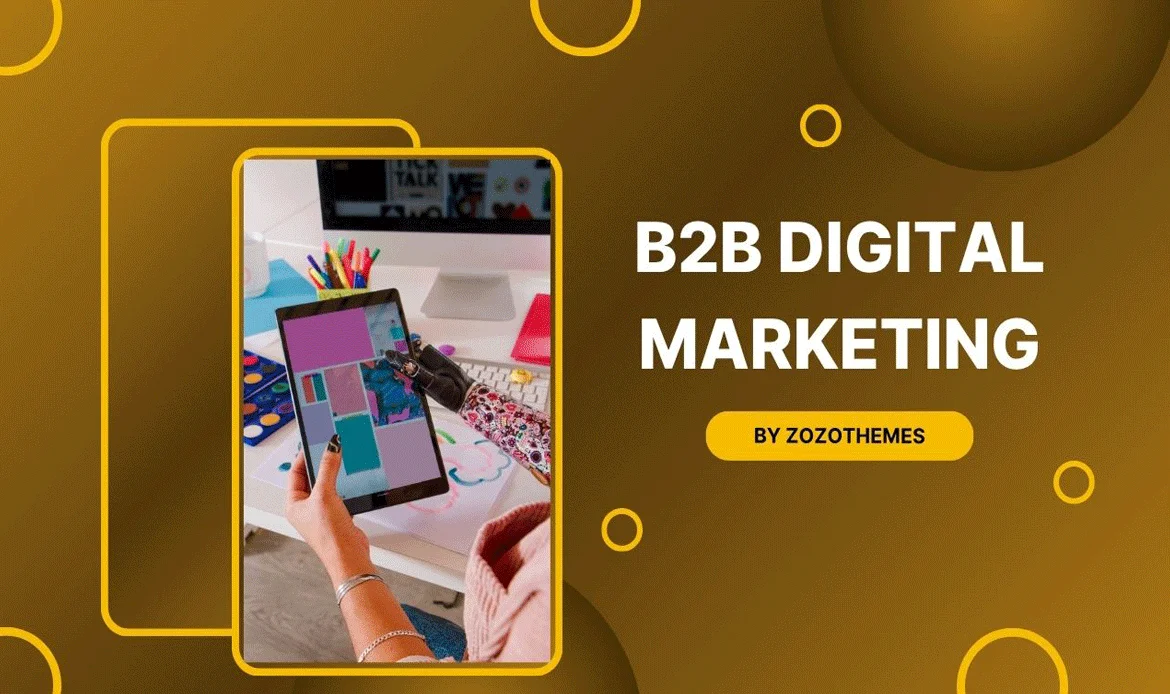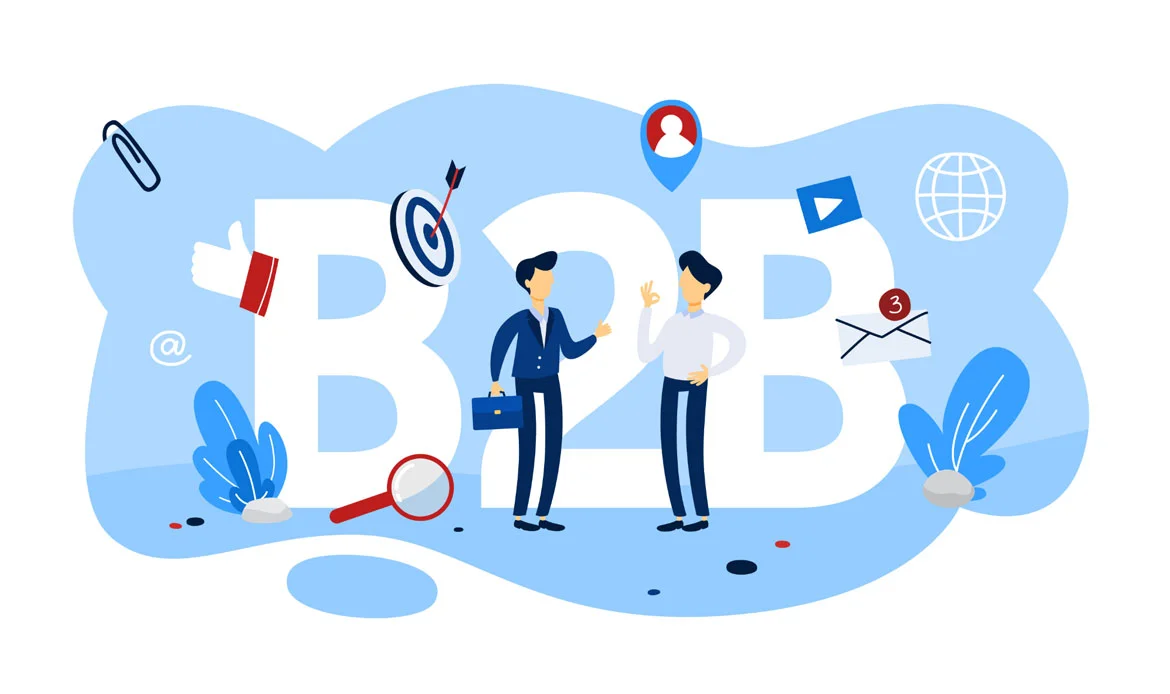In the ever-evolving landscape of B2B digital marketing, staying informed and adapting to the latest trends is the key to success. As we embark on a new year, 2025 brings with it a fresh set of challenges and opportunities for businesses engaging in digital marketing within the B2B sphere.
In the fast-paced world of B2B digital marketing, keeping pace with the latest strategies and technological advancements is not just a choice but a necessity. As we usher in the year 2025, businesses find themselves at the intersection of innovation and opportunity, where a well-crafted digital marketing strategy can be the differentiator in a competitive landscape.
Section 1: The Current State of B2B Digital Marketing

1.1 Overview of B2B Digital Marketing Trends in 2025
As we reflect on the preceding year, key trends come into focus. From the prominence of video content to the growing influence of LinkedIn as a B2B networking platform, understanding these trends sets the stage for anticipating shifts in 2025.
Example: LinkedIn’s Ascendancy
LinkedIn solidified its position as the go-to platform for B2B networking. Companies like Adobe and IBM successfully utilized LinkedIn for targeted advertising, industry discussions, and recruitment efforts. The lessons learned from these successes will shape B2B strategies in the coming year.
1.2 Challenges Faced by B2B Marketers
B2B marketers grapple with multifaceted challenges, including lead generation hurdles, the need for hyper-personalization, and adapting to the rapid evolution of technologies. Navigating these challenges requires a strategic approach and an openness to innovation.
Example: Personalization Prowess
One of the challenges faced by B2B marketers is the need for hyper-personalization. Brands like Amazon Business have set the standard by employing sophisticated algorithms to deliver highly personalized recommendations to B2B buyers. In 2025, businesses must invest in AI-driven personalization tools to enhance the customer experience.
Section 2: Emerging Trends in 2025

2.1 AI and Machine Learning Integration
The infusion of artificial intelligence and machine learning into B2B marketing strategies marks a paradigm shift. These technologies enable unprecedented personalization, predictive analytics, and automation, revolutionizing the way businesses engage with their audience.
Example: Salesforce’s Einstein
Salesforce’s Einstein AI platform has revolutionized B2B marketing by providing predictive analytics and personalized customer journeys. By analyzing vast datasets, Einstein helps businesses like Unilever and Schneider Electric make data-driven decisions, forecast trends, and enhance customer engagement.
2.2 Voice Search Optimization
The rise of voice-activated search necessitates a reevaluation of B2B SEO strategies. Understanding the nuances of voice search and optimizing content accordingly is crucial for maintaining visibility in an evolving digital landscape.
Example: “Hey Siri, Find B2B Marketing Strategies”
With the increasing use of voice-activated devices, businesses must optimize content for voice search. For instance, a B2B software provider can create content that answers common industry questions concisely, catering to users asking voice-activated devices for quick information.
2.3 Interactive Content Marketing
Engaging content takes center stage with the rise of interactive experiences . From quizzes and polls to augmented reality, businesses must explore dynamic content formats that captivate and involve their B2B audience.
Example: IBM’s Interactive Annual Reports
IBM transformed its annual report into an interactive experience, allowing stakeholders to engage with content in a dynamic way. This approach not only enhances user engagement but also provides valuable insights into user preferences and interests.
2.4 Account-Based Marketing (ABM) Evolution
Account-Based Marketing continues to evolve, placing a greater emphasis on personalized, targeted approaches. Leveraging technology and data, businesses can refine their ABM strategies to focus on high-value accounts with precision.
Example: Terminus ABM Platform
Terminus offers a comprehensive ABM platform that allows businesses to identify and target high-value accounts effectively. By personalizing content and outreach for specific accounts, businesses can achieve higher conversion rates, as demonstrated by companies like Slack and Adobe.
Section 3: Data-Driven Decision Making

3.1 The Power of Data Analytics
In 2025, data analytics is not just a tool; it’s a cornerstone of effective decision-making. Harnessing the power of data enables businesses to glean actionable insights, understand customer behavior, and make informed strategic choices.
Example: Google Analytics 4
Google Analytics 4 introduces machine learning and AI-driven insights, providing businesses with a deeper understanding of user behavior. For instance, an e-commerce platform can use these insights to optimize the user journey, resulting in increased conversions and revenue.
3.2 Privacy Concerns and Compliance
As data becomes more central to B2B operations, navigating privacy concerns and compliance with evolving regulations is paramount. Businesses must prioritize data ethics and adopt robust measures to ensure the responsible handling of customer information.
Example: GDPR Compliance in Email Marketing
With privacy concerns on the rise, businesses must prioritize compliance. Email marketing platforms like Mailchimp offer GDPR-compliant features, allowing businesses to build trust with their audience by ensuring responsible data handling.Section 4: Content Strategies for B2B Success

4.1 Video Marketing Excellence
The visual appeal of video content continues to dominate the B2B landscape. From product demonstrations to thought leadership videos, businesses must leverage the storytelling power of video to engage and educate their audience effectively.
Example: Adobe’s Creative Cloud YouTube Channel
Adobe’s Creative Cloud YouTube channel is a prime example of effective video marketing. By providing tutorials, product showcases, and creative insights, Adobe not only engages its B2B audience but also positions itself as an industry authority.
4.2 Podcasting in B2B
Podcasting emerges as a powerful medium for B2B content. By offering valuable insights, expert interviews, and industry commentary, businesses can establish thought leadership and connect with their audience in an intimate and accessible format.
Example: “The McKinsey Podcast”
McKinsey & Company’s podcast is a testament to the power of B2B podcasting. By featuring industry experts discussing business trends and insights, McKinsey establishes thought leadership and reaches a broader audience in an accessible format.
4.3 The Role of Influencer Marketing
In B2B, influencer marketing goes beyond celebrity endorsements. Collaborating with industry thought leaders and experts can enhance credibility, broaden reach, and foster trust among the target audience.
Example: Microsoft and Neil Patel Collaboration
Microsoft collaborated with digital marketing influencer Neil Patel to promote its cloud services. This strategic partnership not only expanded Microsoft’s reach but also leveraged Neil Patel’s credibility to enhance trust and credibility among the target audience.
Section 5: The Mobile-First Approach

5.1 Mobile Optimization Strategies
With the majority of users accessing digital content on mobile devices, businesses must prioritize mobile optimization. Responsive design, intuitive navigation, and fast-loading pages are essential components of a successful mobile strategy.
Example: Airbnb’s Mobile-Optimized Experience
Airbnb’s mobile app provides a seamless and intuitive user experience, allowing B2B businesses to draw inspiration for creating mobile-optimized websites and applications. This approach ensures that users can access information easily, leading to higher engagement and conversion rates.
5.2 Applying Responsive Design Principles
A responsive design ensures a seamless user experience across devices. By adapting to different screen sizes and orientations, businesses can cater to the diverse preferences of their audience.
Example: Bootstrap Framework
The Bootstrap framework simplifies responsive web design, making it easier for businesses to create websites that adapt to various screen sizes. By implementing responsive design principles, B2B websites can deliver a consistent and user-friendly experience across devices.
Section 6: Integrating Social Media Effectively

6.1 Utilizing LinkedIn for B2B Success
LinkedIn remains a powerhouse for B2B networking and lead generation. Crafting a robust LinkedIn strategy involves sharing valuable content, engaging in relevant discussions, and building meaningful connections within the professional community.
Example: IBM’s Thought Leadership on LinkedIn
IBM leverages LinkedIn for thought leadership by sharing articles, industry insights, and engaging in meaningful discussions. B2B businesses can emulate this strategy by actively participating in relevant LinkedIn groups, sharing valuable content, and establishing themselves as industry leaders.
6.2 Emerging Trends in B2B Social Media
Beyond LinkedIn, businesses must stay attuned to emerging trends in B2B social media. From the use of ephemeral content to the integration of social commerce, understanding these trends is integral to a comprehensive social media strategy.
Example: Instagram’s “Swipe-Up” Feature for B2B
Instagram’s “Swipe-Up” feature in Stories allows B2B businesses to direct users to specific content or landing pages. This emerging trend showcases the potential for B2B engagement on visual platforms, encouraging businesses to explore creative ways to leverage social media for lead generation.
Frequently Asked Questions
1. What are the key trends in B2B digital marketing for 2025?
The trends include increased integration of AI and machine learning, the optimization for voice search, a focus on interactive content marketing, and the evolution of Account-Based Marketing (ABM) strategies.
2. What are some effective strategies for video marketing in the B2B space?
AI and machine learning can enhance personalization, automate marketing processes, predict customer behavior, and provide valuable insights for data-driven decision-making.
3. Why is voice search optimization crucial for B2B businesses?
With the rise of voice-activated devices, optimizing content for voice search is essential to ensure that businesses remain visible and accessible to audiences using voice commands for information retrieval.
4. What is the significance of Account-Based Marketing (ABM) in 2025?
ABM continues to evolve, focusing on highly personalized strategies to target specific high-value accounts. This approach ensures more precise and effective engagement with key business prospects.
5. Why is a mobile-first approach crucial for B2B digital marketing?
With a growing number of users accessing content on mobile devices, adopting a mobile-first approach ensures that B2B websites and applications deliver a seamless and user-friendly experience across various screen sizes.
Conclusion
As we conclude our expedition into the realm of B2B digital marketing in 2025, it’s evident that the landscape is more dynamic and promising than ever before. The strategies and insights uncovered in this guide serve as a compass for businesses aiming not just to survive but to thrive in the digital sphere.
In a world where algorithms evolve, and consumer behavior undergoes constant transformation, adaptation becomes paramount. The year 2025 is marked by a confluence of traditional wisdom and technological innovation, offering businesses a unique opportunity to forge meaningful connections with their audience.
The journey through content strategies, data analytics, and emerging technologies has underscored the importance of agility and foresight. Successful B2B digital marketing isn’t merely about embracing trends but about anticipating them. The businesses that flourish are those that integrate innovation into their core strategies, leveraging the power of digital channels to captivate, engage, and convert.
As we stand on the brink of this digital frontier, armed with the knowledge encapsulated in this guide, let us embark on the exciting journey that is 2025. May your B2B endeavors be marked by resilience, creativity, and a strategic prowess that transcends the ordinary. Here’s to a year of digital triumphs and a future where your brand not only navigates change but becomes an architect of it. Happy marketing!
Master B2B Digital Marketing in 2025
Boost your brand authority using SEO-optimized WordPress themes, responsive designs, and seamless integration tools that enhance lead generation. 2025 is all about smarter connections — start mastering the future of B2B marketing today!



